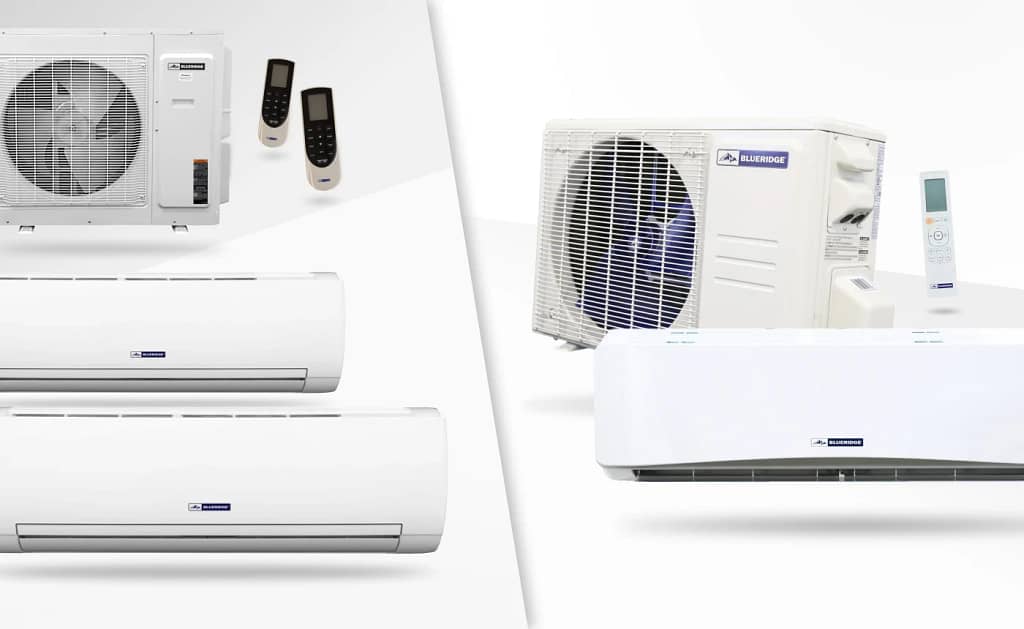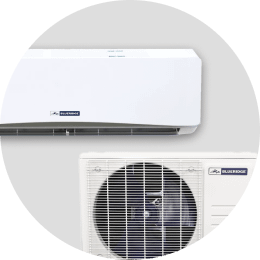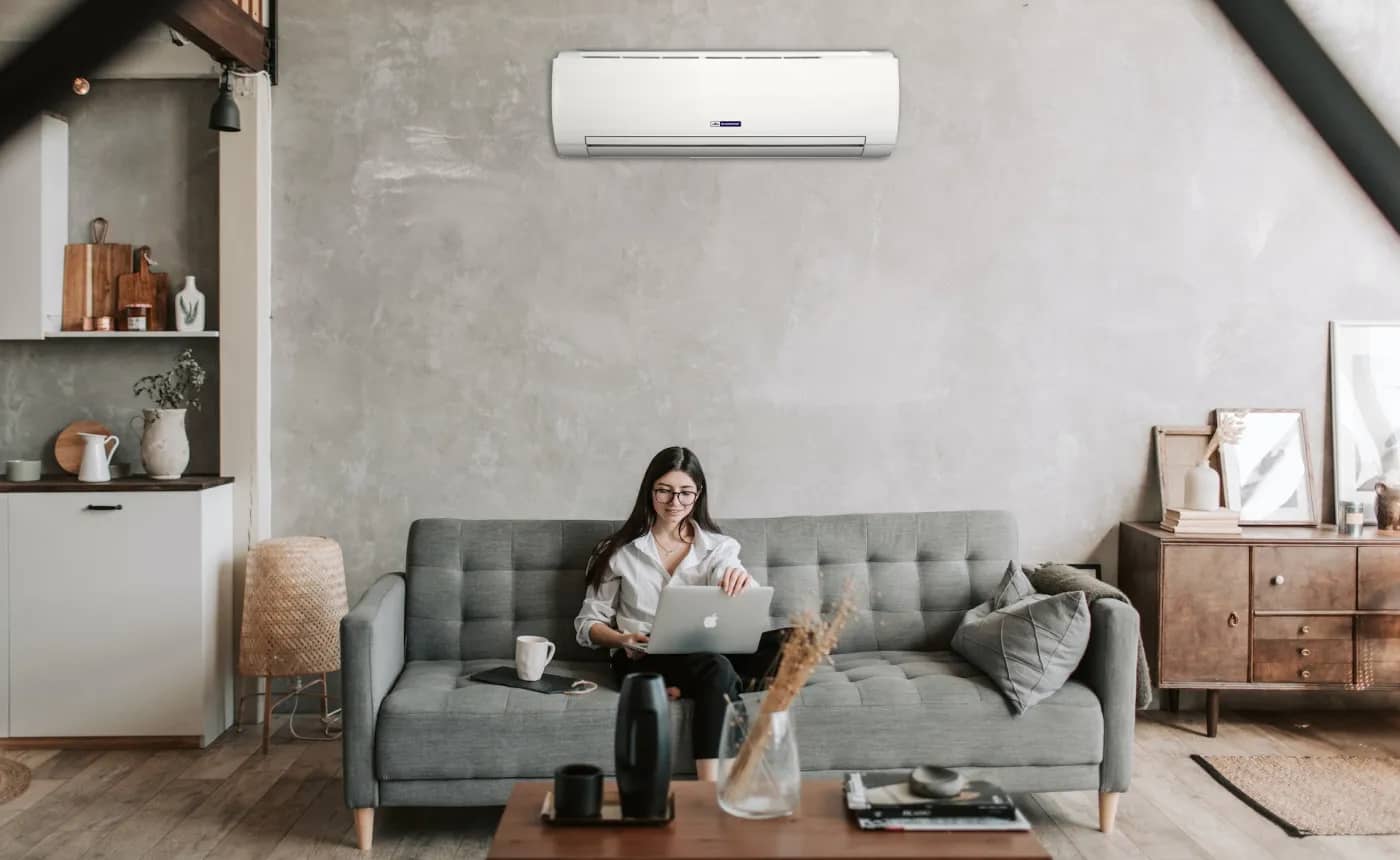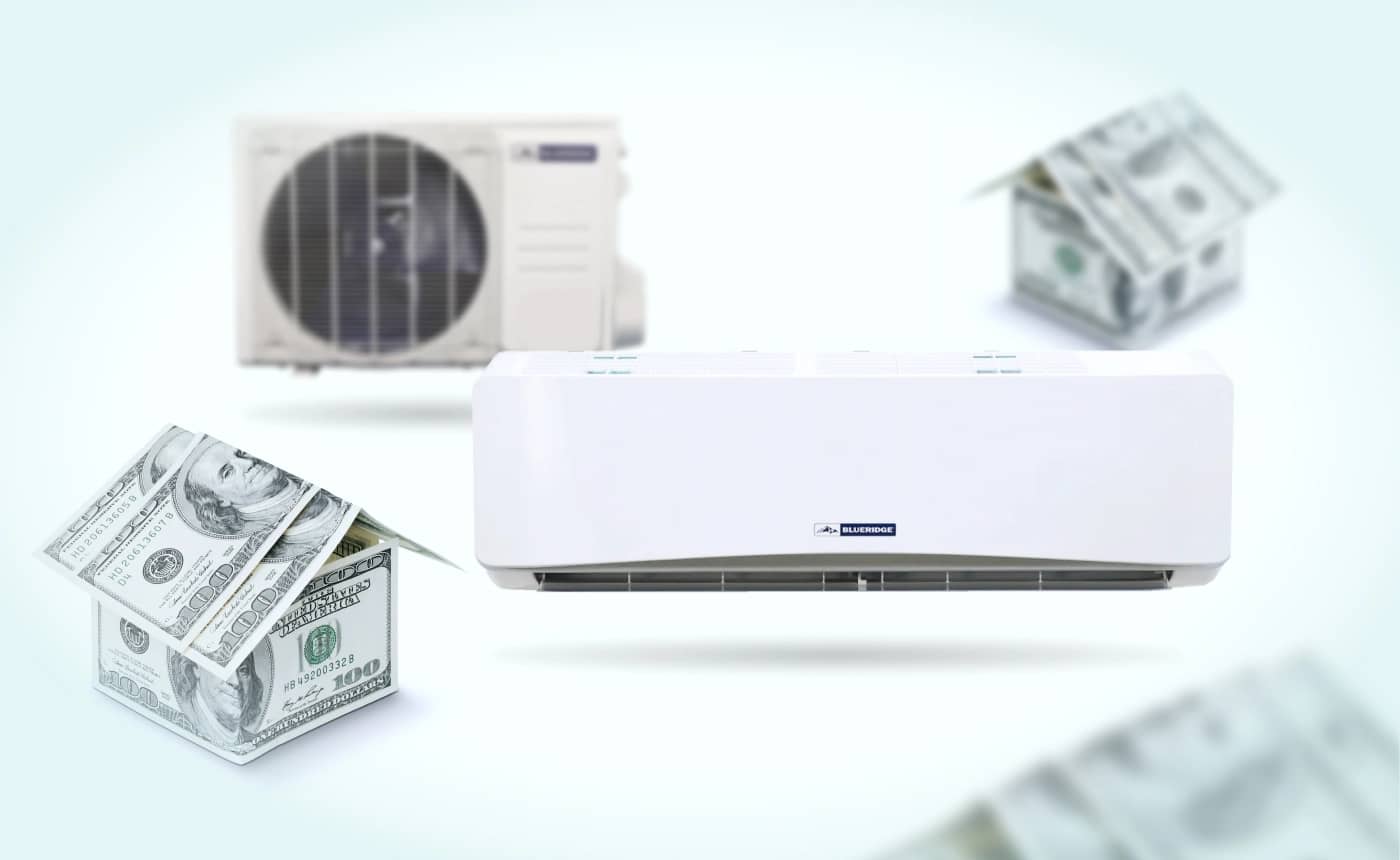
In the constantly evolving world of HVAC, ductless mini-split systems stand out for their efficiency and versatility. However, considering the efficiency of a multi-zone vs. single-zone mini-split is a key step in understanding these innovative systems. Making the right decision can be challenging if you aren’t exactly sure what you need and how to get there.
KEY TAKEAWAYS
- Comparing the efficiency of multi-zone vs. single-zone mini-split systems, both offer distinct advantages in terms of efficiency. Each space’s specific heating and cooling needs influence the choice between them.
- While a single-zone unit will target one specific area, a multi-zone system will cater to diverse temperature requirements across multiple rooms.
- Consulting with HVAC experts can provide invaluable insights into choosing the system that best aligns with your immediate and long-term wants and needs.
Congratulations if you have decided that a ductless mini-split system is the right choice for your heating and cooling needs! You’ve made an excellent choice.
But if you’re still unsure whether a single-zone or a multi-zone system is what you need, read on!
While both mini-split systems are high on energy efficiency and comfort and low on cost, key differences will help you decide.
What are Single-Zone and Multi-Zone Mini-Split Systems?
Mini-split systems have taken the HVAC market by storm, providing efficient and flexible heating and cooling solutions for various spaces.
These systems come in two primary configurations: single-zone and multi-zone.
Understanding the distinctions between them will be your first step in deciding which one will best cover your heating and cooling needs.
Basic Overview of Each System Type

Single-Zone Mini-Split Heating and Cooling System:
As the name suggests, a single-zone mini-split system is designed to condition one specific area or “zone” of a building.
This setup comprises one indoor unit (an air handler) and one outdoor unit (a condenser or heat pump).
These compact and low-cost systems are ideal for all sorts of spaces, including individual bedrooms, additions, small offices, or any space where centralized systems might not be practical or efficient.

Multi-Zone Mini-Split Heating and Cooling System:
Multi-zone systems serve up to five rooms or zones within a home or building using multiple air handlers connected to a single outdoor unit.
Each indoor unit in a multi-zone system can be controlled independently, allowing for tailored temperature settings in different zones.
Multi-zone units are particularly advantageous in larger homes, multi-story buildings, or any space where individuals require varying temperature preferences.
For example, a multi-zone unit is an excellent choice in a home with multiple bedrooms. While one occupant may prefer a lower temperature when sleeping, the other may prefer their bedroom to be a bit warmer. This is where a multi-zone unit truly shines.
Design and Operation: Single-Zone vs. Multi-Zone
1. Design Complexity:
Single-zone systems have a straightforward design with a one-to-one connection between the indoor and outdoor units.
Multi-zone systems, however, involve a more complex configuration, with multiple indoor units connecting to a single outdoor unit.
The design of multi-zone systems often requires more intricate planning (or consulting an HVAC professional) to ensure optimal performance for each zone.
2. Installation Flexibility:
While both systems offer flexible installation options, multi-zone systems take more time to install since more indoor units are involved.
That said, multi-zone systems are still much easier to install than traditional HVAC systems since there is no ductwork. Further, these systems can condition multiple rooms without installing multiple outdoor units.
While a single-zone system will typically require less time and effort to install than a multi-zone system, both are still excellent options for homes or buildings where ductwork is limited or when you don’t want to rely on an outdated ducted system to provide four-season comfort. Single-zone mini-split cost will typically be lower since fewer units are needed to complete the system.
3. Control and Customization:
Single-zone systems provide tailored temperature settings for one specific area. These systems are straightforward in their design and function. Install the indoor unit in a space you want to heat or cool independently of any other existing HVAC system.
In contrast, multi-zone mini-splits offer individualized control over a range of rooms or zones. A multi-zone system allows for varying temperature settings that cater to different occupants’ preferences or room-specific needs.
With the ability to operate five different indoor units independently, multi-zone mini-splits are an ideal heating and cooling solution for spaces where comfort levels may be unique to different people’s needs or in environments where certain rooms or zones tend to stay hotter or cooler.

Efficiency: Multi-Zone vs. Single-Zone Mini-Split
One of the primary reasons homeowners and business proprietors opt for mini-split systems is their renowned efficiency.
However, understanding how a single-zone vs. multi-zone mini-split impacts energy consumption can improve decision-making when choosing between them.
Here are some of the biggest energy-efficient strengths of each:
Single-Zone Mini-Split Efficiency

Precision Control:
A single-zone system caters to one specific area, ensuring it maintains temperature in that zone with pinpoint accuracy. This means the system works only as much as needed for that space, optimizing energy use.

Less Energy Wastage:
Since the system serves a singular zone, there’s minimal risk of overcooling or overheating, which would otherwise waste energy. Also, there’s less potential for energy loss as the conditioned air travels only a short distance from the indoor unit to the room.

Optimal for Specific Needs:
If only one area of the house or building requires conditioning, say a bedroom or a home office, then a single-zone mini-split ensures that energy isn’t wasted on cooling or heating unoccupied spaces.
A single-zone mini-split system makes a great energy-efficient option for a space cut off from the rest of the home. Imagine precision comfort in an apartment above the garage, a newly remodeled basement, or a workshop in your storage shed.
In such situations, you won’t have to worry about heating or cooling this space except when it’s in use. This simple change can drastically lower your carbon footprint and energy bills.
Multi-Zone Mini-Split Efficiency

Tailored Conditioning:
One of the standout features of multi-zone systems is the ability to condition multiple areas to different temperatures simultaneously. Instead of cooling or heating an entire home to a uniform temperature, energy is used more strategically based on the preferences of different zones.

Reduced Energy Footprint with One Outdoor Unit:
Rather than having multiple single-zone systems requiring multiple outdoor units, the multi-zone system centralizes the operation with a single outdoor unit. This consolidation tends to be more energy-efficient, especially when multiple rooms need conditioning.

Adaptable Output:
Multi-zone systems adjust their output based on the combined demands of all the connected zones. For instance, if one room needs minimal heating, but another requires more intensive cooling, the system dynamically allocates energy, ensuring neither underperformance nor wastage.
A multi-zone system will significantly increase your energy efficiency when used appropriately.
For example, you want to keep your primary bedroom slightly cooler at night than your new baby’s nursery.
You can do this easily if you have a multi-zone system with indoor units installed in both rooms. Not only will this mean more comfort for everyone, but less energy waste as well.
Single-zone and multi-zone mini-split systems are both champions of energy efficiency. Both system types are designed to cut our costs and carbon footprint based on our space and manner of use.

Questions to Ask Before Making Your Decision
Choosing between a single-zone and a multi-zone mini-split system can be perplexing, especially when you have so many options.
Here are some questions you can ask yourself that may help you make a final decision:

1. How many rooms or areas in my home require individual temperature control?

A single-zone system is ideal if only one room or zone needs temperature regulation. However, a multi-zone system is more fitting if multiple rooms require individualized temperature settings.

2. Do I have varied temperature preferences for different areas of my home?

A multi-zone system will be ideal if your home or office has people with different temperature preferences for their rooms. This is also true if you have spaces in your home or building that stay hotter or cooler than others.

3. What is my primary goal: targeted comfort for a specific space or comprehensive temperature control for the whole house or building?

A single-zone system may be perfect for targeted comfort in a specific room, such as a newly added sunroom or a renovated basement. A multi-zone system is more effective for broader, whole-house, or building temperature regulation, especially in larger homes.
And the Winner is…Alpine Home Air!
Whether you have decided that a single-zone or a multi-zone mini-split is the right one for you, Alpine is ready to help you cross the finish line to heating and cooling success.

For over 20 years, Alpine Home Air Products has been helping customers like you determine what type of HVAC system will best suit their unique situation.
From large central air systems to parts and accessories for a single-zone mini-split, no need is too small, and no question is too complicated for our highly skilled HVAC experts.
Come check out what Alpine has in store for you!


